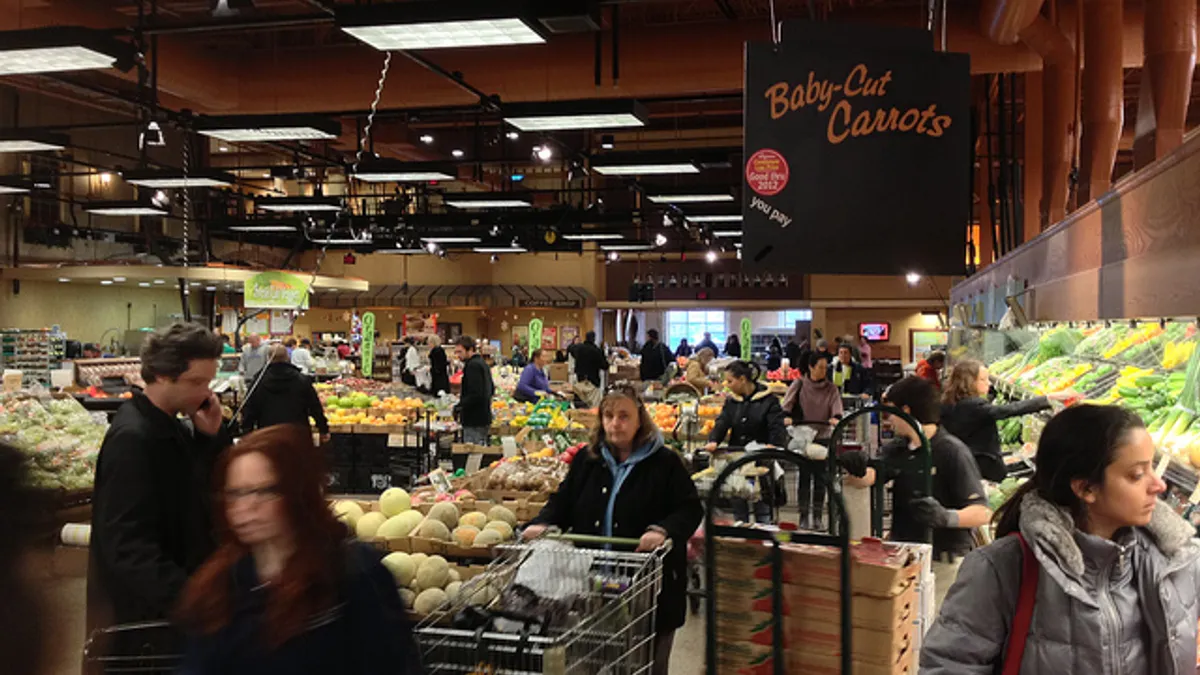Dive Brief:
- Brick-and-mortar stores are the preferred destination for fresh and frozen products while nonfoods, health and beauty care and dry grocery categories are all seeing double-digit sales growth online, according to a report from Acosta. Overall, 97% of CPG dollars are spent inside stores.
- Natural channel shoppers are the strongest e-commerce adopters, with 53% saying they’ve purchased groceries online. Just 43% of grocery and 37% of mass channel shoppers, meanwhile, say they’ve bought groceries online.
- Even the most dedicated online shoppers report a willingness to visit stores for certain products and offers. Acosta notes that 27% of millennial e-commerce shoppers say in-store sampling is a reason to go to brick-and-mortar stores.
Dive Insight:
Retailers are well aware that e-commerce is a growing opportunity, but that the vast majority of their sales still happen in stores. What’s unknown is how to properly integrate both shopping experiences to maximize sales.
Part of the answer, Acosta's report indicates, is knowing what sells well in stores and what sells well online. According to its omnichannel report, produce and deli items saw in-store sales rise 7.3% and 2.9%, respectively, last year compared to 2015. General merchandise and health and beauty care sales saw online sales rise 5.9% and 15.4%. Physical stores clearly have the advantage when it comes to selling fresh, perishable items, while nonfoods and healthcare items tend to perform well through e-commerce.
However, the breakdown isn’t as clear-cut for grocers as the numbers indicate. Although perishable products sell well in stores, Acosta notes, improvements in shipping and logistics make them increasingly attractive through online shopping. Nonfood sales, meanwhile, are getting vacuumed up by pure-play e-commerce companies like Amazon and dedicated sites like pet product provider Chewy.
Retailers can strengthen their brands and shore up customer loyalty through in-store experiences and fresh products. Sampling in the deli and produce departments, for instance, creates a sensory experience that can boost a retailer’s image. Even dedicated e-commerce shoppers, the Acosta report indicates, say they visit stores for these offerings.
At the same time, stores should embrace store technology that marries online and in-store shopping. More and more retailers are offering mobile apps that straddle both worlds, offering promotions, list builders and other tools that can be utilized in stores and for e-commerce. Some apps, like Walmart’s new Scan & Go app, which lets shoppers scan products while they shop and then pay using a preloaded credit card, are bringing online convenience to the store shopping. Acosta figures show that around 60% of shoppers are at least somewhat interested in this type of technology.
Retailers need to be aware of the strengths their ecommerce and store experiences offer, but also not become too fixed in their thinking. Although fresh items sell well in store, grocers still need to push online sales and try to improve shipping and logistics. And although younger shoppers tend to gravitate toward e-commerce, retailers should encourage all shoppers across demographics to utilize their online shopping tools.










